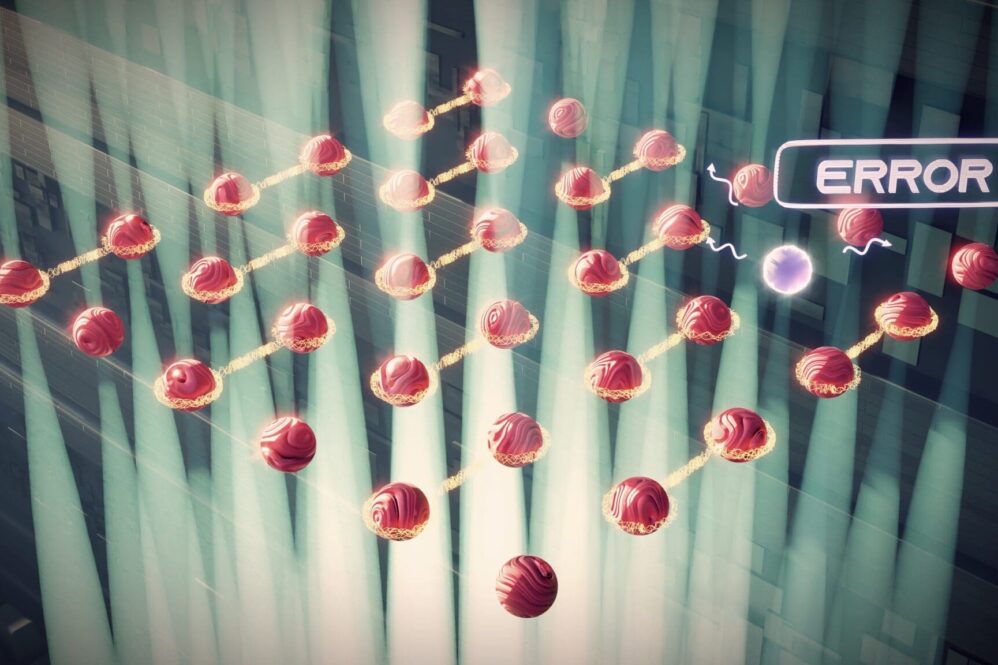Researchers have developed a new method for correcting errors in quantum computers, potentially removing a major obstacle to advanced computing. The interdisciplinary team was led by Jeff Thompson from Princeton, with collaborators from Yale University and the University of Wisconsin-Madison.
Quantum computers can solve complex problems impossible for conventional computers, but they rely on extremely delicate subatomic particle behaviors that are easily disrupted. Unlike conventional computers where error correction is well-established, even checking for errors in quantum systems can cause them to collapse.
The research, published in Nature Communications, demonstrates a technique that increases fault tolerance in quantum computers four-fold, from 1% to 4% acceptable error rate—a practical threshold for quantum computers currently in development.
Rather than solely reducing errors, the team made errors more detectable by engineering their system to convert common errors into “erasure errors.” In these cases, the damaged data is effectively eliminated rather than corrupted, making it easier to identify and exclude from calculations.
Thompson explained that in conventional computing, if redundant information comes through as “11001,” it’s difficult to determine which bits are wrong. However, if it appears as “11XX1” with corrupted bits clearly marked, those bits can be excluded from consideration.
The breakthrough came from Thompson’s earlier decision to use ytterbium atoms, which have two electrons in their outer layer instead of one. This property allows researchers to move the electrons from their stable “ground state” to fragile “metastable states” that are engineered to fall back to ground state when errors occur. When this happens, the electrons scatter light visibly, allowing faulty qubits to be easily identified and discounted.
While this specific approach uses ytterbium atoms, the concept of engineering quantum systems to generate erasure errors could be adapted to other quantum computing architectures. Thompson mentioned that other research groups have already begun exploring adaptations of this work.
The team is now working on demonstrating their error correction method in a small working quantum computer with several tens of qubits.
Reference: Yue Wu, Shimon Kolkowitz, Shruti Puri, Jeff D. Thompson. Erasure conversion for fault-tolerant quantum computing in alkaline earth Rydberg atom arrays. Nature Communications, 2022; 13 (1) DOI: 10.1038/s41467-022-32094-6

